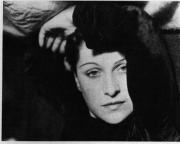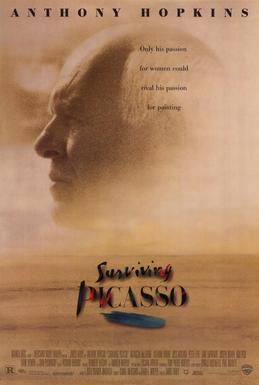Related Research Articles

Georges Braque was a major 20th-century French painter, collagist, draughtsman, printmaker and sculptor. His most notable contributions were in his alliance with Fauvism from 1905, and the role he played in the development of Cubism. Braque's work between 1908 and 1912 is closely associated with that of his colleague Pablo Picasso. Their respective Cubist works were indistinguishable for many years, yet the quiet nature of Braque was partially eclipsed by the fame and notoriety of Picasso.

Pablo Ruiz Picasso was a Spanish painter, sculptor, printmaker, ceramicist, and theatre designer who spent most of his adult life in France. One of the most influential artists of the 20th century, he is known for co-founding the Cubist movement, the invention of constructed sculpture, the co-invention of collage, and for the wide variety of styles that he helped develop and explore. Among his most famous works are the proto-Cubist Les Demoiselles d'Avignon (1907) and the anti-war painting Guernica (1937), a dramatic portrayal of the bombing of Guernica by German and Italian air forces during the Spanish Civil War.

The chicken is a large and round short-winged bird, domesticated from the red junglefowl of Southeast Asia around 8,000 years ago. Most chickens are raised for food, providing meat and eggs; others are kept as pets or for cockfighting.

Cubism is an early-20th-century avant-garde art movement that revolutionized European painting and sculpture, and inspired related artistic movements in music, literature, and architecture. In Cubist works of art, the subjects are analyzed, broken up, and reassembled in an abstract form—instead of depicting objects from a single perspective, the artist depicts the subject from multiple perspectives to represent the subject in a greater context. Cubism has been considered the most influential art movement of the 20th century. The term cubism is broadly associated with a variety of artworks produced in Paris or near Paris (Puteaux) during the 1910s and throughout the 1920s.

Guernica is a large 1937 oil painting by Spanish artist Pablo Picasso. It is one of his best-known works, regarded by many art critics as the most moving and powerful anti-war painting in history. It is exhibited in the Museo Reina Sofía in Madrid.

The Musée Picasso is an art gallery located in the Hôtel Salé in rue de Thorigny, in the Marais district of Paris, France, dedicated to the work of the Spanish artist Pablo Picasso (1881–1973). The museum collection includes more than 5,000 works of art and tens of thousands of archived pieces from Picasso's personal repository, including the artist's photographic archive, personal papers, correspondence, and author manuscripts. A large portion of items were donated by Picasso's family after his death, in accord with the wishes of the artist, who lived in France from 1905 to 1973.

Les Demoiselles d'Avignon is a large oil painting created in 1907 by the Spanish artist Pablo Picasso. Part of the permanent collection of the Museum of Modern Art in New York, it portrays five nude female prostitutes in a brothel on Carrer d'Avinyó, a street in Barcelona, Spain. The figures are confrontational and not conventionally feminine, being rendered with angular and disjointed body shapes, some to a menacing degree. The far left figure exhibits facial features and dress of Egyptian or southern Asian style. The two adjacent figures are in an Iberian style of Picasso's Spain, while the two on the right have African mask-like features. Picasso said the ethnic primitivism evoked in these masks moved him to "liberate an utterly original artistic style of compelling, even savage force” leading him to add a shamanistic aspect to his project.

Olga Picasso was a Russian ballet dancer in the Ballets Russes, directed by Sergei Diaghilev and based in Paris. There she met and married the artist Pablo Picasso, served as one of his early muses, and was the mother of their son, Paul (Paulo).

Henriette Theodora Markovitch, known as Dora Maar, was a French photographer, painter, and poet. A romantic partner of Pablo Picasso, Maar was depicted in a number of Picasso's paintings, including his Portrait of Dora Maar and Dora Maar au Chat.

Marie-Thérèse Walter was a French model and lover of Pablo Picasso from 1927 to about 1935 and the mother of their daughter Maya Widmaier-Picasso. Their relationship began when she was seventeen years old; he was 45 and married to his first wife, Olga Khokhlova. It ended after Picasso moved on to his next relationship, with artist Dora Maar. Walter is known as Picasso's "golden muse" and inspired numerous artworks and sculptures that he created of her during their relationship.
The Blue Period comprises the works produced by Spanish painter Pablo Picasso between 1901 and 1904. During this time, Picasso painted essentially monochromatic paintings in shades of blue and blue-green, only occasionally warmed by other colors. These sombre works, inspired by Spain and painted in Barcelona and Paris, are now some of his most popular works, although he had difficulty selling them at the time.

Surviving Picasso is a 1996 American biographical drama film directed by James Ivory and starring Anthony Hopkins as the famous painter Pablo Picasso. It was produced by Ismail Merchant and David L. Wolper. Ruth Prawer Jhabvala's screenplay was loosely based on the 1988 biography Picasso: Creator and Destroyer by Arianna Stassinopoulos Huffington. It was a box-office bomb, grossing $2 million at the box office against a budget of $16 million.
Picasso at the Lapin Agile is a full-length play written by American actor, comedian, writer, producer, and musician Steve Martin in 1993.

The Chicago Picasso is an untitled monumental sculpture by Pablo Picasso in Daley Plaza in Chicago, Illinois. The 1967 installation of The Picasso, "precipitated an aesthetic shift in civic and urban planning, broadening the idea of public art beyond the commemorative."

The Museu Picasso is an art museum in Barcelona, in Catalonia, Spain. It houses an extensive collection of artworks by the twentieth-century Spanish artist Pablo Picasso, with a total of 4251 of his works. It is housed in five adjoining medieval palaces on Montcada Street in the La Ribera neighborhood in the Old City of Barcelona. It opened to the public on 9 March 1963, becoming the first museum dedicated to Picasso's work and the only one created during his lifetime. It has since been declared a museum of national interest by the Government of Catalonia.

Paloma Picasso is a French fashion designer and businesswoman, best known for her jewelry designs for Tiffany & Co, and her signature perfumes. She is the daughter of artist Pablo Picasso and artist Françoise Gilot. Her name, Paloma (Dove), is associated with the symbol her father designed for the World Congress of Partisans for Peace, held in Paris the same year Paloma was born, and it can be found in many of her father's works.

The Weeping Woman is a series of oil on canvas paintings by Pablo Picasso, the last of which was created in late 1937. The paintings depict Dora Maar, Picasso's mistress and muse. The Weeping Woman paintings were produced by Picasso in response to the bombing of Guernica in the Spanish Civil War and are closely associated with the iconography in his painting Guernica. Picasso was intrigued with the subject of the weeping woman, and revisited the theme numerous times that year. The last version, created on 26 October 1937, was the most elaborate of the series, and has been housed in the collection of the Tate Modern in London since 1987. Another Weeping Woman painting created on 18 October 1937 is housed at the National Gallery of Victoria and was involved in a high-profile political art theft.

Matilda was a fourteen-ounce (400 g) hen, and the first chicken to receive the title of World's Oldest Living Chicken from Guinness World Records. She is thought to have been descended from the Red Pyle color variation of the Old English Game breed. She was a pet of Keith and Donna Barton of Bessemer, a suburb of Birmingham, Alabama.

Picasso is a crater on Mercury. It has drawn scientific attention because of the large, arc-shaped pit crater located on the eastern side of its floor. Similar pits have been discovered on the floors of several other Mercury craters, such as Beckett and Gibran. These pits are postulated to have formed when subsurface magma subsided or drained, causing the surface to collapse into the resulting void. If this interpretation is correct, pit-floor craters such as Picasso provide evidence of shallow magmatic activity in Mercury's history.
Hen Hop is a 1942 drawn-on-film animation short created by Norman McLaren for the National Film Board of Canada. In it, a hen gradually breaks apart into an abstract movement of lines as it dances to a barn dance.
References
- ↑ "Liguria's flavoursome legacy". Stuff.